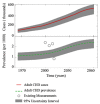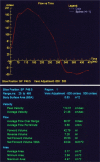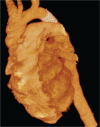General Concepts in Adult Congenital Heart Disease
- PMID: 29400306
- PMCID: PMC5820444
- DOI: 10.4274/balkanmedj.2017.0910
General Concepts in Adult Congenital Heart Disease
Abstract
Congenital heart disease in adults (adult congenital heart disease) is a growing burden for healthcare systems. While infant mortality due to congenital heart disease in the last four decades decreased by almost 3-fold, adult congenital heart disease prevalence increased by more than 2-fold in United States. Adult congenital heart disease prevalence is expected to increase steadily until 2050 in projections. Adult congenital heart disease is a multifaceted problem with many dimensions. This manuscript aims to provide an overview of the common adult congenital heart diseases and summarize important points in management of these diseases with possible problems and complications that the patients and the physicians face.
Keywords: Adult; concepts special.; congenital heart disease; general.
Figures








References
-
- Kelleher AA. Adult congenital heart disease (grown-up congenital heart disease) Continuing Education in Anaesthesia Critical Care and Pain. 2012;12:28–32.
-
- Marmagkiolis K, Arzamendi D, Goktekin O, Cilingiroglu M. Structural heart interventions training in Europe. Int J Cardiol. 2016;202:532–4. - PubMed
Publication types
MeSH terms
LinkOut - more resources
Full Text Sources
Other Literature Sources
Medical
